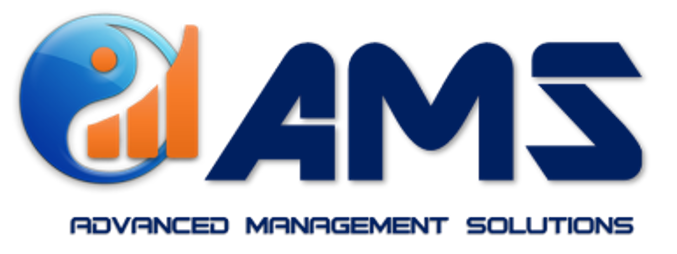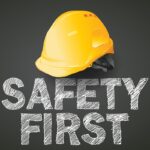At the heart of a successful business lies a strong safety culture. And, just like other areas of operations, a successful company makes use of the data available to continuously work to drive up standards in health and safety, employing a range of Key Performance Indicators (KPI’s) to track specific objectives when it comes to health and safety management.
Key performance indicators
KPI’s are a valuable way of monitoring lagging or leading performance. Tracking them is, or should be, an integral part of any Safety Manager worth his or her salt’s role.
While lagging indicators can be used to track incidents that have occurred (past data) and assist in sourcing the root of the problem, leading indicators are more predictive by nature, and will help companies to address and prevent potential issues and incidents from occurring in the first place – arguably a far better goal to strive for!
Characteristics of a good health and safety performance KPI
A good performance indicator is a ‘SMART’ KPI:
- Specific – it should be clear what is being measured
- Measurable – it should be measurable against set standards
- Achievable – target a realistic/achievable goal
- Relevant – it should offer insight into overall safety performance
- Timely – KPI’s should follow a set time-frame
Like other business units, Health and Safety departments are no exception to tracking key metrics that show performance.
However, while you may not be reporting any accidents, this doesn’t necessarily mean you can rest on your laurels and assume that your safety operations are effective. Past data will not help you to identify potential issues or hazards; and if you’re failing to report near misses, or any ‘band-aid’ or quick-fix solutions that have been implemented, then you may well be missing the bigger picture.
-
Reported Accidents/Incidents
This first point should be taken as a given – a lagging indicator in its most obvious form. However, it really does provide the health and safety department with a high-level benchmark and is required by law for work-related accidents resulting in a ‘reportable’ injury, for most UK workplaces under RIDDOR* rules.
-
Reporting Near Misses
As already mentioned, a hugely misrepresented area for many organisations is the reporting ‘near-miss’ incidents. Effectively reporting near misses and reviewing the mitigating strategies that ensue means that organisations can go a long way to preventing potential disasters. But how will anyone know of the success in this area if it’s not being tracked?
Tracking near misses involves employee participation. Make sure the right reporting channels are in place to give near miss incidents the same level of priority as actual incidents and actively encourage employees to feed back without fear of punitive action.
-
Safety Audits and Inspections
Are you keeping track of the number of audits and inspections that being undertaken across the business on a monthly/quarterly/annual basis? The routine auditing of work processes is an essential part of due diligence ahead of starting a job. Keep count of completed audits and inspections and note who they are completed by to help you keep track of changes in standards – either up or down from your baseline.
-
Corrective Actions
While fixing issues is clearly advisable, it’s not enough to simply fix them and not report them. Identifying, fixing and tracking problems will help you to identify patterns arising within the workplace from similar incidents, as well as assist in fixing similar issues more efficiently. This will also serve to hold employees accountable for the part their actions played in a given situation.
-
Employee Training
Get it right! The relevant health and safety training for all staff, at all levels, within any organisation, is paramount to establishing good practice. Making sure that employees are aware of all your company’s procedures and policies is essential for creating a safety culture and raising engagement levels.
Keeping track of employee training records, while seemingly a thankless task, is vital to keeping you compliant and demonstrates a proactive approach to company-wide health and safety efforts. For many businesses, it’s essential that training certificates don’t expire, and therefore, this key metric cannot be overlooked!
-
Let’s not forget the ‘H’
More and more we are seeing the re-introduction of the ‘Health’ element of health and safety programmes, which have historically overlooked this key area. Employee well-being, while seemingly a new ‘buzzword’, is a hugely important area of any corporate health and safety strategy. But which metrics should you track here?
Consider absence rates and any changes therein. Calculate days lost due to ill-health and determine the amount paid in sick leave and temporary staffing. Presenteeism (or the lost productivity occurring from an employee working when ill and performing below standard) should also be measured – although this is arguably far trickier!
The Sainsbury Centre has implied that the cost of presenteeism to a UK business is likely to be 1.8 times as important as absenteeism and employers can expect in the region of 1 in 6 of their workforce to be adversely affected by depression, anxiety or other mental health conditions.
-
Spend
No different to any other department, you will, of course, need to track your spend in health and safety on the various initiatives outlined above in order to be able to report back ‘up-the-line’ and ultimately improve the ‘bottom line’.
The feedback arising from key OHS metrics will help in motivating leaders and are key to maintaining good management systems. A combination of lagging and leading indicators will help you to set the scene for good organisational safety, as well as putting improvement measures in place.






